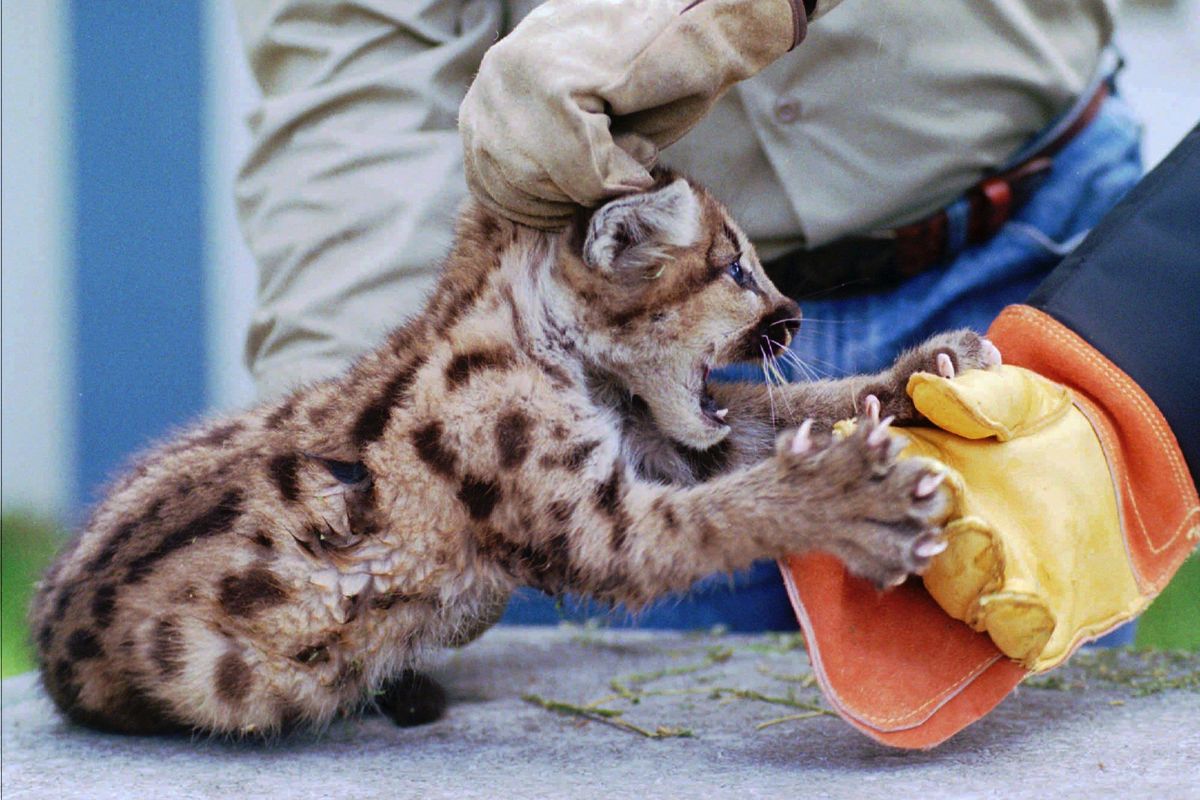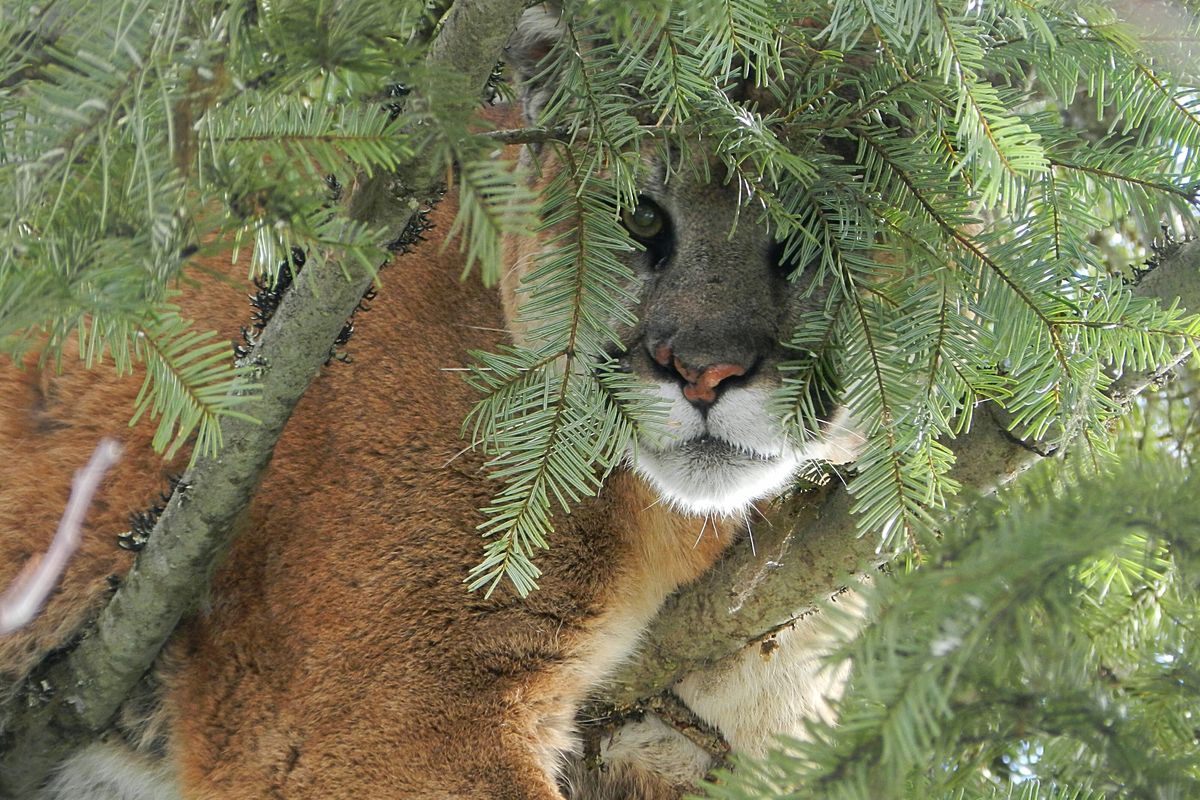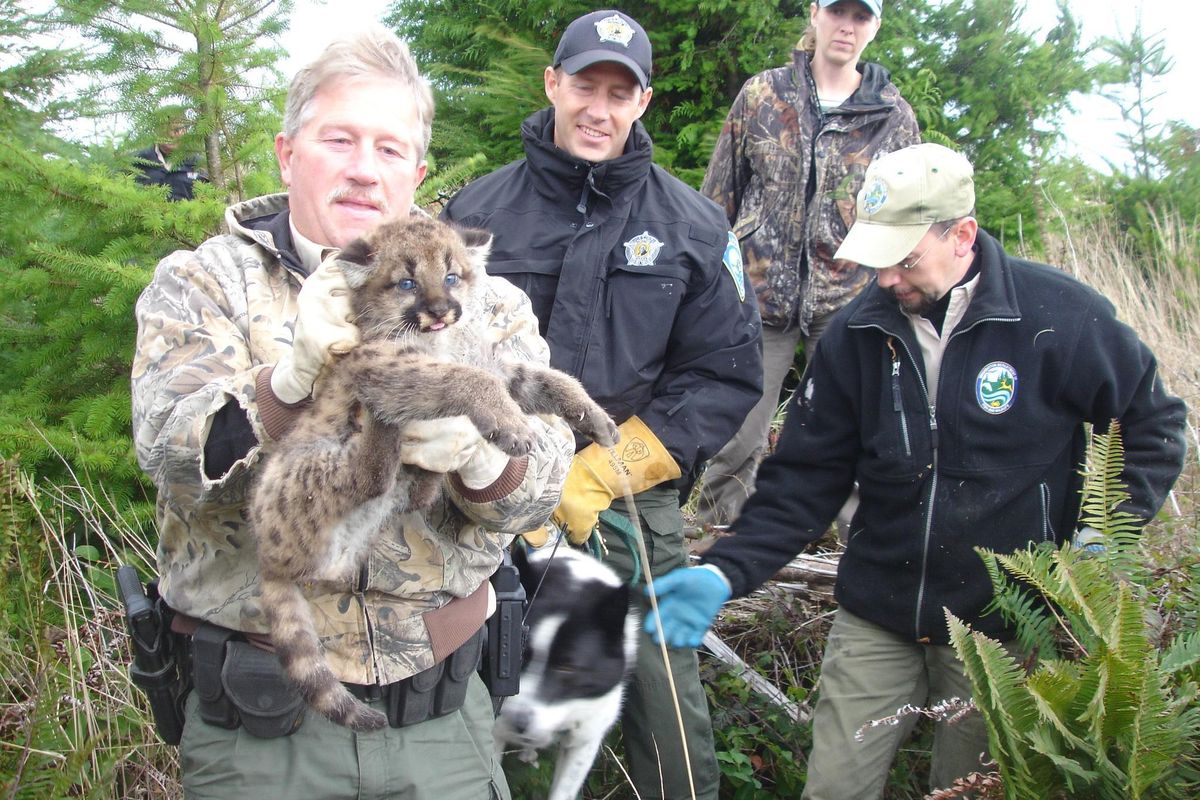Yes, a recent attack concerns me, but I still run in cougar country

The snow and ice of the trail crunch and squeak below the sheet-metal screws drilled on the bottoms of my running shoes, a winter trail running hack. It’s about 25 degrees in February and sunny on Barr Trail, which winds 13 miles up Pikes Peak, at 14,115 feet, one of Colorado’s highest mountains.
A couple of hours earlier, I stood with other runners in the Incline Club, whose motto, “Go out hard. When it hurts, speed up,” I usually don’t live up to it, but that’s not the point.
At 8 a.m., in 10 degrees, we set out in hats and gloves and running tights, carrying hydration packs with drinking tube that will freeze unless you mix in Gatorade. If it’s cold enough, the tube will freeze even if you tuck it inside your wool shirt next to your skin. This is all part of pushing yourself in a wild and untamed place that’s a world away from offices and obligations.
The challenges of mountain running connect me to the landscape and other runners in all manner of weather. In the summer heat, I go in a matter of seconds from the exhilaration of quickly picking my way in and out of loose rocks to tasting gritty dirt on my tongue, felled by feet tangled in those rocks. As I sit up, I feel the prickle of road rash where my tights have ripped.
“Are you OK?” a passing runner asks, stopping to help me. “I think so, but my ribs hurt,” I say. “They hurt bad.” We have 5 miles to go, and despite the heat, this runner helps me get back to the trailhead.
Whether it’s broken ribs or one of those races in which the heat and altitude land me in the medical tent on oxygen or an IV with two bags of saline, a hug and a high-five remind me it was “just a bad day” in trail-runner speak.
Many runs are drama-free, rewarded by the solitude of deeply inhaling the smell of pine and snapping photos of the flowers in bloom, or catching up with a running buddy where we make it back to the trailhead much happier than when we started. I can never be sure what awaits.
It’s spring which means stir-crazy recreationists are heading into the woods and hills. And whether you’re looking for wildflowers, hunting turkeys or hiking mountains in northeast Washington and North Idaho that means you’re in cougar country. And as always, bear spray isn’t just for bears. Don’t leave home without it. (Courtesy)
As journalist Daniel Coyle, author of “The Culture Code: The Secrets of Highly Successful Groups,” said on the podcast WorkLife With Adam Grant, “Our intuition has it backward. You do not build trust in order to be vulnerable. When you’re vulnerable, it builds trust. Being vulnerable together builds closeness and creates it.”
But as much as I enjoy trail running with others, especially as a way to not feel so alone when you don’t know what kind of adventure will be in store that day, I also set out on my own if no one is free, or if I’m just in the mood for solitude.
I ended up on my own on that February run. I had the trail to myself as I turned around at a popular stop, No Name Creek, about 4 miles up.
As I’ve aged, I’ve felt fear creep into my solo runs. For years, I felt invincible. Despite bear or mountain lion sightings, unpredictable and severe afternoon lightning storms, or not-quite-healed injuries, I would get out on the trail. Now when I run alone, I’m more aware of the sounds around me.
A mile or so down that day, the silence was broken by birds fluttering through leaves in the thicket of trees to my left. Then I heard branches crunching. I caught my breath, looked over and kept going. I was spooked, yet grateful that two bad falls on the trail when I was zoning out to music had finally convinced me to give up ear buds. I could always hear what was around me – even if it left me wondering what it was.
I had been surprised by the gentleness of deer delicately crossing or furiously running along the trail in front of me. I had seen a few giant bighorn sheep thrust their otherworldly curly horned heads through the brush. I had once run the other direction from a bear – what not to do. I had almost stepped on rattlesnakes. I ran on a high desert trail where shotguns were permitted for dove hunting and stepped around shells.
But the snap of branches spooked me.
Nothing came charging out at me, so I kept going.
A few days before, trail runner Travis Kauffman, 31, had killed a young mountain lion that attacked him as he ran on a trail at Horsetooth Mountain Park, a few hours north in Fort Collins.
“I think if I had ear buds in,” Kauffman said later, “I wouldn’t have heard the stick crack, and I wouldn’t have turned, and in that case I think the fight would have been very different, just for the fact it could have latched onto the back of my neck, and I don’t know how I would have been able to get the cat off in that case.”
Kauffman wrestled the mountain lion, later estimated to be between 35 to 40 pounds, and suffocated it by stepping on its neck with his foot when it was on its back. Kauffman required more than 20 stitches from claw and bite wounds on his face and wrist, which the mountain lion had seized in its jaws.
Although mountain lion attacks on people are rare, the population boom of Colorado’s Front Range pushing into mountain suburbs means it has become common to see mountain lions caught on a home surveillance video on decks and backyards. Runners spot them, too.
We are in mountain lion country, after all.
I have never seen a mountain lion in 15 years of trail running all over the Front Range, but that doesn’t mean that I sometimes don’t look behind me when I’m running alone and have a feeling I’m being watched. As the saying goes around here, “Even though you don’t see them, you can be sure that they see you.”
That’s not comforting, but we coexist with wildlife in this part of the country. A healthy fear keeps us watchful but doesn’t scare us off.
“You shouldn’t be afraid that the animals are there, but you should be conscious that they’re out there,” said Cody Wigner, assistant area wildlife manager for the Pikes Peak region of Colorado Parks and Wildlife. “And you should know what to do when you see one.”
This includes raising your arms, making yourself as large as possible and remaining calm, resisting the urge to run, which can activate their ambush instinct. But it also includes fighting back if attacked, as Kauffman did.
I always take the odds into consideration.
“For people who trail run alone, if it’s really important to you and you’re willing to take the risk, the fact is that thousands of people do it every day and they come home and they’re fine,” Boulder, Colorado-based science writer David Baron said.
His book, “The Beast in the Garden: The True Story of a Predator’s Deadly Return to Suburban America,” chronicles the deadly attack by a mountain lion on a high school runner behind his school and an attack on a Boulder runner, as well as how a growing mountain city deals with mountain lions in their midst. He warns against running alone.
“Because the odds of a mountain lion attack go from extraordinarily small to infinitesimally small if you go with someone else,” he said.
Even knowing this, I will head out by myself, although I make sure to have a safety plan.
“People ask me all the time, ‘This has all happened to you and you still run?’ ” said Nancy Hobbs, executive director of the American Trail Running Association, who has encountered a mountain lion on Barr Trail and been attacked by a hawk in Germany in more than 30 years of trail running.
“And I say, yes, because you’re empowered by doing it, and you’re not empowered by not doing it,” she said. “I do think carrying something, going with someone, letting someone know where you’re going, going with your dog, all those things are good and should make you feel more comfortable. The fear factor is gone.
“If you have that trepidation, do something to remove it, and you’re good to go.”





